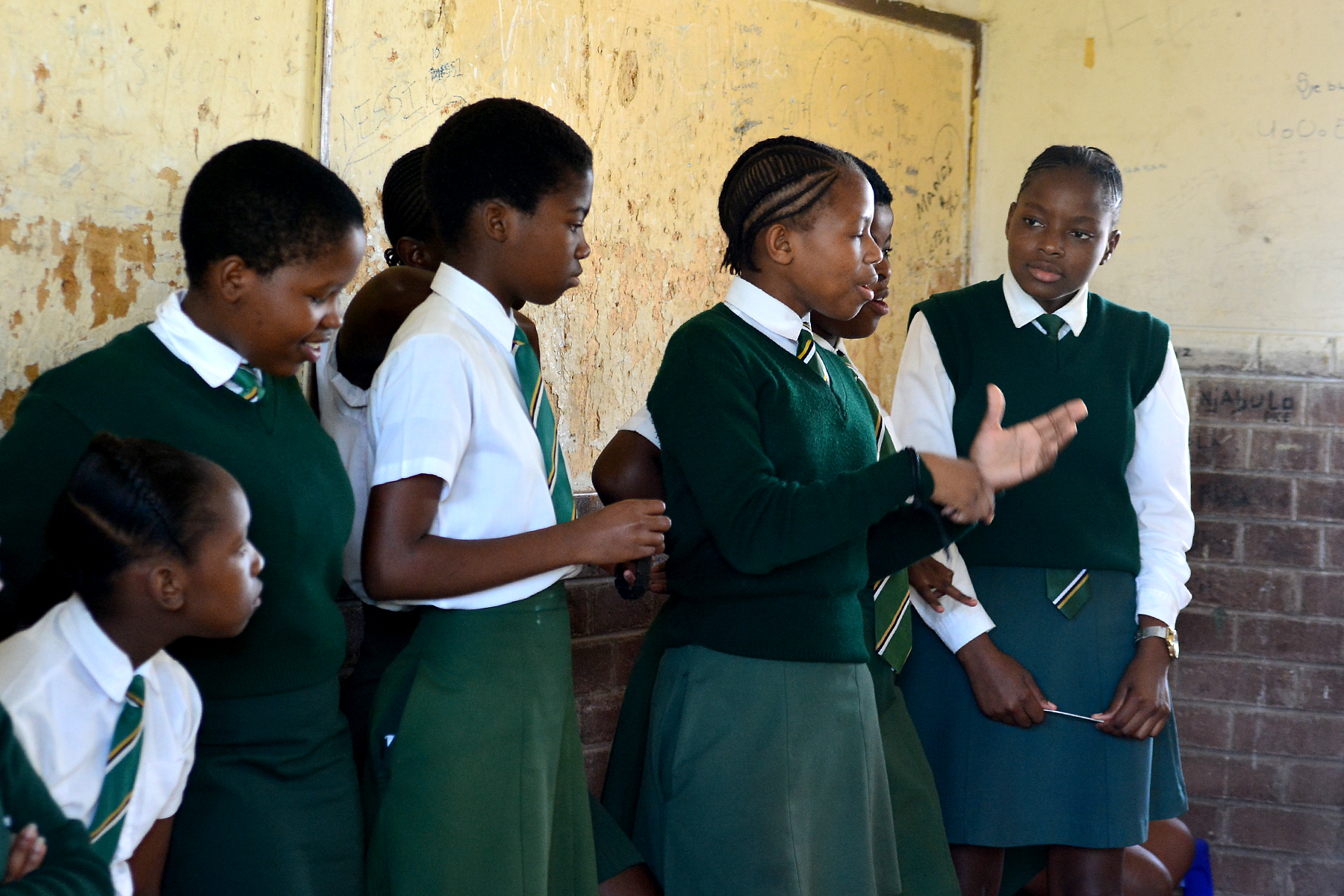
![]()
Gold youth Development Agency
Youth unemployment is one of the greatest challenges in Sub-Saharan Africa and various factors contribute to this challenge, including poverty. Inspired by a vision of young Africans living purpose-filled lives and propelling Africa to fulfil its social and economic potential, gold youth Development Agency (gold-youth) was birthed in 2004. The programme is implemented in South Africa, Botswana, Zambia, and Zimbabwe; and soon Rwanda. gold-youth seeks to bring about sustained community change from the ground up, through an ‘each-one-reach-one’ model of youth peer education which casts every young person in Sub Saharan Africa as a future nation-builder. The target group for gold-youth is young people from disadvantaged communities.
![]()
Our Approach
The gold solution uses the methodology of peer education, which harnesses the influence that young people have on their peers and younger children to bring about sustained social and economic change.
The gold leadership pipeline:
![]()
- Post-School Facilitator Interns: gold-youth screens, recruits and skills unemployed youth between the ages of 18 to 26 to serve as long-term agents of change at school level. gold-youth provides a job creation opportunity for these youth, and they are employed and trained within the gold Model to mentor teenage leaders called Peer Educators. Selected Facilitator Interns are provided with an additional fourth year which has a specialized role that focuses on supporting younger youth for the world of work.
- Peer Educators: Adolescent leaders are trained and mentored over three years (starting at Junior Secondary School) by the Facilitator Interns to fulfil their four roles -
1: Role model positive decision-making and behaviour;
2: Recognize issues peers are facing and refer for professional help if required;
3: Educate;
4: Participate in community activities.
- Peers and younger children: Peer Educators are skilled to support their peers and younger children to make positive choices, strengthen their schoolwork and maximize impact on their communities.
- Gold Grads: Once Facilitator Interns and Peer Educators have completed the programme, they become part of the gold Grads alumni community to be supported further. gold-youth has partnered with several corporates such as Absa, APROS, Harambee, to facilitate placement of grads. gold-youth provides skills development opportunities to gold Grads and connects them to opportunities in:Further study
- Jobs/Internships
- Micro-businesses and Entrepreneurial ventures
- Nation-building
Facilitator Interns, Peer Educators, and Peers receive a combination of accredited and/or non-accredited capacity-building and training, quality assurance and supporting resources covering 6 modules of content over these themes:
- Leadership (including work readiness)
- Self-Development
- Gender, Relationships & Rights
- Sexual & Reproductive Health
- Communication Skills
- Community Action
Gold Youth Development Agency is an accredited training organization, registered with the Education, Training and Development Practices Sector Education and Training Authority (ETDP SETA).
Gold-youth Approach: Systemic scale strategy
To ensure scalability and replicability, gold-youth has a “deep” and “wide” strategy.
“Deep”
Gold Social Franchisees are non-profit organizations that gold-youth partners with to implement our programme. Gold-youth gives these organizations a range of services, including quality assurance, which helps the peer education programme to run successfully in selected high schools and their surrounding communities.
“Wide”
Gold-youth shares their solution through a DIY blended curriculum and product suite, branded Peer2Peer, which is supported by Gold-youth’s training and support services. This resource is adaptable to various contexts for youth and adults.
Through Peer2Peer we have packaged the key curriculum and lessons from the Gold Model’s 17-year track record, with concrete results in social behaviour change, improved education and job creation across 123 communities. This digital/print toolkit has gone live to serve multiple stakeholders, in their context.
![]()
![]()
Key Results
Through the ‘each-one-reach-one’ model of youth peer education, gold-youth has reached over
74 000 young people in 123 communities in 4 African countries since the inception of the programme in 2004.
- 18 220 gold Peer Educators trained
- gold-youth has facilitated 1663 job placements since 2015
- 811 Facilitator internships created
- 56 132 peers and children reached
![]()
![]()
Lessons Learnt (Success Factors & Challenges)
- Long term pipeline development is the best strategy for sustainable youth development: Motivating disenfranchised youth to change their behaviour (social norms) requires long term investment of time; mentorship, programmatic depth and resources. This long-term pipeline the most sustainable strategy to achieve social cohesion and economic independence.
- Peer education is an effective methodology to achieve positive youth and community change that is ground up and youth led: Our experience confirms that young people do not change with information alone, they change when others around them change and this has been demonstrated and lived out within the peer groups.
- Youth are not the problem but are the solution to their own problem: When given a platform even the apathetic young people rise to the challenge and become a greater force for positive change.
Challenges
The key challenge encountered was on partnerships with government institutions, gold-youth learnt some key lessons to address these challenges, namely:
- Ensuring that a Memorandum of Agreement is in place before embarking on a project. A process was developed of hearing what the needs of government are and what job we can serve them with, before drafting the MOU.
- Maintain up-to-date knowledge of government structure which one may need to be registered with to do work with the government.
- Maintain close relationships with government officials at a local level as they work on the ground.
- Government ownership is a challenge: work-load and apathy are challenges that gold-youth faces amongst government role players at grassroots yet their support is important for creating an enabling environment for young people.
Moving forward
In ensuring the sustainability of the programme, gold-youth has an enterprise arm that delivers training programmes for the private sector and government institutions for profit. This is done by leveraging gold-youth’s wealth of experience from research, development practices, and peer education methodology.


